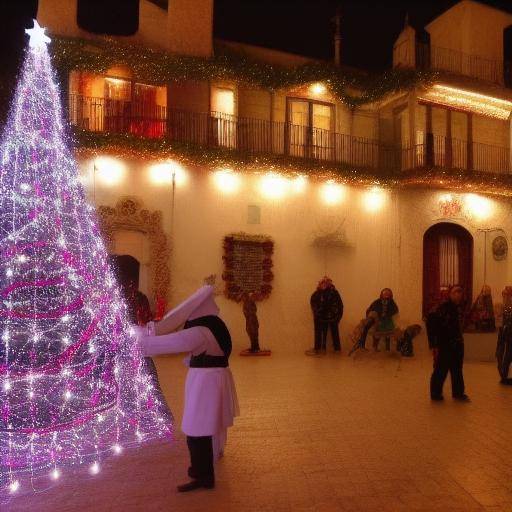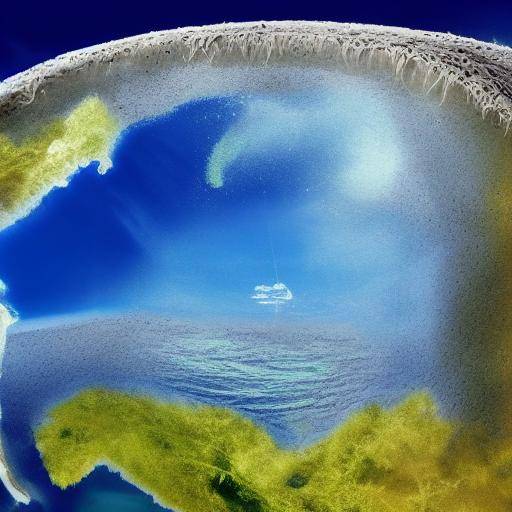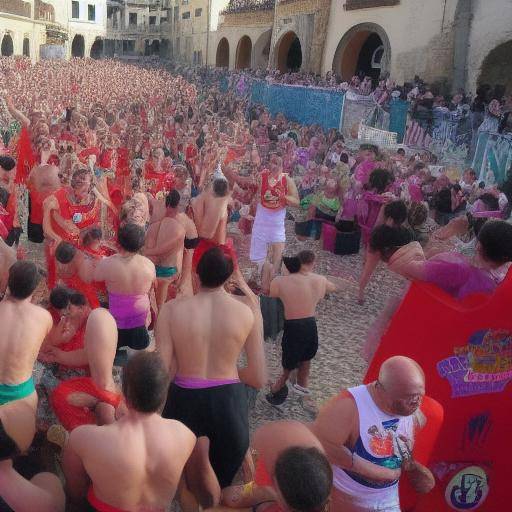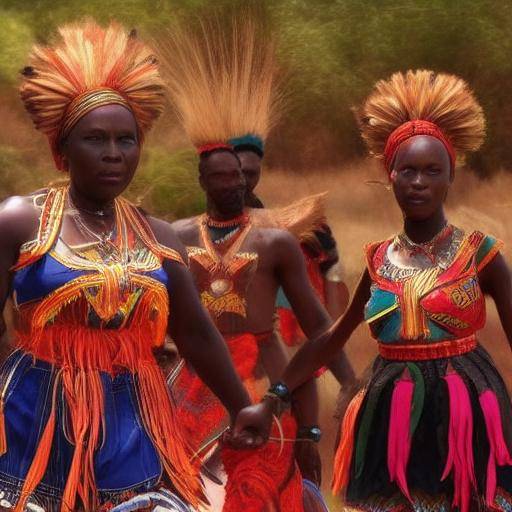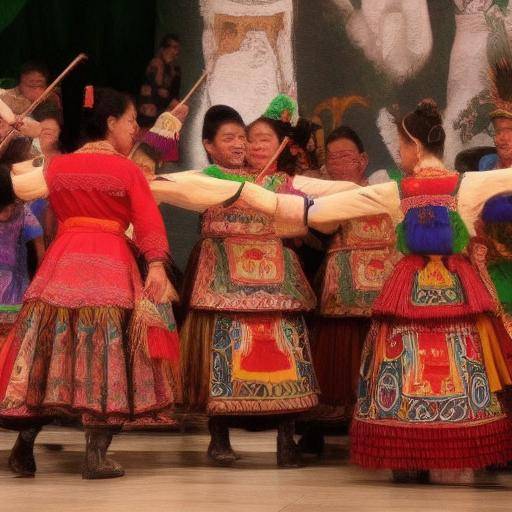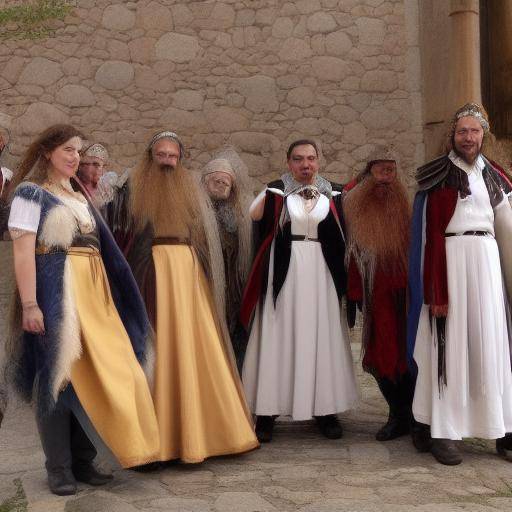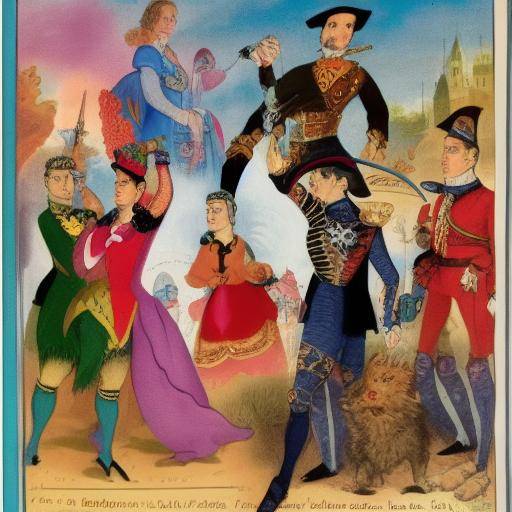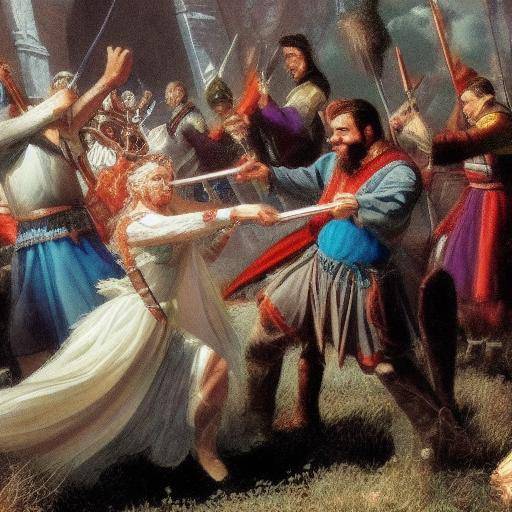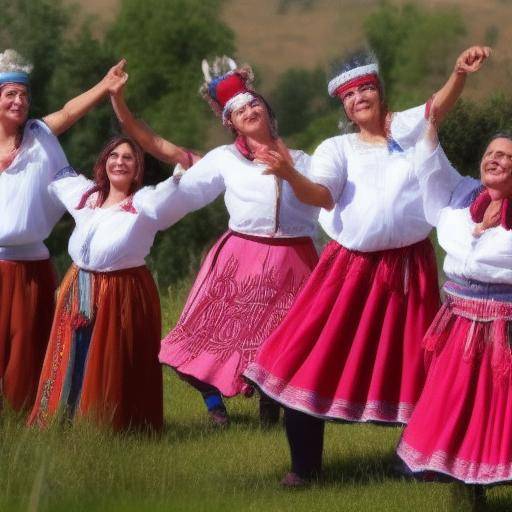
The richness of European folklore is evident in the diversity of myths and legends that have transcended over the centuries. Among these narratives are the myths of nature, stories that have captured the imagination of generations, transmitting teachings about the natural world and its mysteries. In this article, we will explore in depth the myths of nature in European folklore, analyzing its relevance, manifestations and connections with popular tradition. In addition, we will unravel the legends that have enriched and embellished man's understanding of nature. Join us on this journey through the ancestral narratives that last until today.
Introduction
The deep connection between human beings and nature has been a recurring theme in European cultures throughout history. Since ancient times, civilizations have nurtured their imaginary with stories that personify the natural elements, giving meaning and symbolism to the world around them. Through myths and legends, European folklore has established an unbreakable bond between man and nature, enriching the cultural and spiritual fabric of societies.
Exploring these myths gives us the opportunity to understand how ancient civilizations perceived the natural environment, giving it human and divine attributes. Likewise, European folklore allows us to enter a universe of narratives that transcend the barriers of time, revealing the legacy of wisdom that has endured through generations.
Nature Myths: A Look at Ancient Cosmovision
The myths of nature within European folklore are an amalgam of beliefs, symbolism and teachings that reflect the profound relationship between man and his natural environment. These narratives are bearers of profound meanings that transcend the purely anecdotal, revealing a cosmovision that honors and respects the natural elements.
In analyzing the myths of European nature, we find a wealth of narratives that personify forces of nature, such as wind, water, forests and mountains. These personifications serve as a vehicle for transmitting moral teachings, explaining natural phenomena and giving a sense of belonging and respect to the natural environment.
Throughout Europe, folklore is impregnated with stories that illustrate the close relationship between man and nature. From the mysterious forests of Eastern Europe to the serene Mediterranean coasts, each region has forged its own repertoire of myths that enclose the ancestral wisdom and the indomitous spirit that characterizes these narratives.
European folklore: A treasure of natural legends
In the rich upholstery of European folklore, natural legends occupy a prominent place by personifying and exalting natural elements, giving them a transcendental meaning. These legends, transmitted from generation to generation, have served as a bridge between human beings and nature, enriching the understanding of the natural environment.
European legends about nature reflect the reverence and respect that ancient cultures had towards the natural elements. From the magic of enchanted forests to the stories of nymphs that protect rivers and streams, these narratives evoke a spiritual connection with nature that transcends the purely material.
As we explore the natural legends of European folklore, we enter a territory of imagination and symbolism, where every natural element weaves tales of mystery, astonishment and ancestral wisdom. These legends are an invaluable legacy that invites us to reflect on our relationship with the natural world and the importance of preserving its unique essence
Nature Myths in the European Folklore: A Deep Exploration
History and Background
The origin of the myths of nature in European folklore dates back to ancient times, where Celtic, Germanic, Roman and Greek civilizations, among others, created narratives that personified natural elements such as gods, spirits or mythical creatures. These stories not only entertained, but also conveyed knowledge about the relationship between man and nature, as well as spiritual and moral values.
European folklore has been shaped by a diversity of cultural influences over the centuries. From the oral tradition of indigenous peoples to the written collection of the Grimm brothers, folklore has evolved, adapting to each historical period and the different regions of Europe. This enrichment of cultural heritage is reflected in the diversity of myths of nature present in the region.
In Deep: Analysis and Meaning
The myths of nature in European folklore transcend mere entertainment, as they enclose profound meanings and spiritual connections with the natural environment. Such accounts represent the vision of the world and the relationship of the human being with nature in different European cultures throughout history. The interpretation of these myths offers a window to the understanding of the ancestral worldview and its influence on the collective mindset.
These myths not only function as catalysts of imagination, but have also incarnated values such as respect, protection of the environment and harmonious coexistence with nature. Thus, a legacy of wisdom has been passed through generations, in which nature is seen as a living and sacred entity that deserves to be cared for and preserved.
Full Review: Applications and Perspectives
Although the myths of nature in European folklore have ancestral roots, their influence endures to the present day. In contemporary narrative, these legends continue to inspire literature, art, music and cinema, enriching cultural expression and stimulating ecological consciousness.
The myths of nature in European folklore are not only a source of cultural enrichment, but also offer a starting point to understand and address current environmental challenges. Through these accounts, a deeper understanding of the interaction between the human being and the natural environment is promoted, encouraging reflection on the importance of conservation and respect for nature.
Comparative Analysis: Myths, Folklore and Legends
By comparing the myths of nature with European folklore and legends, similarities and differences emerge that enrich our understanding of these narratives. While myths focus on explaining natural phenomena and informing cultural values, folklore encompasses a wider spectrum of popular traditions, customs and beliefs. On the other hand, legends, while sharing the personification of nature, are also intertwined with historical events and specific places, giving a more localized character to narratives.
This interconnection between myths, folklore and legends creates a narrative tapestry that highlights the importance of keeping these traditions alive, not only as artistic expressions, but as vehicles of knowledge and preservation of the balance between man and nature.
Conclusions and FAQs
Conclusions
The myths of nature in European folklore are testimonies of the deep bond that unites human beings with nature. These narratives, derived from the beliefs and experiences of various European cultures, have exerted a lasting influence on the understanding and relationship of man with his natural environment.
Frequently asked questions
1. What is the myth of the most famous nature in European folklore?
European folklore hosts a rich diversity of nature myths, but one of the most famous is the myth of the Lady of the Lake. This legend, present in different European cultures, tells the story of a mysterious female figure associated with lakes and rivers, which bestows magical swords on legendary heroes. Its presence symbolizes the connection between humanity and the vital force of water, manifesting the spiritual and symbolic importance of this natural element.
2. What lessons can we draw from the myths of nature in European folklore?
The myths of nature in European folklore teach us about the value of harmony with the natural environment, respect for the natural elements and the understanding of the interconnection between all forms of life. They also offer lessons on environmental care and the importance of preserving biodiversity for the balance of the planet.
3. How have the myths of nature influenced popular art and culture in Europe?
The myths of nature in European folklore have significantly influenced art, literature, music and visual culture, providing reasons and inspiration for artistic expression. These narratives have permeated the collective imagination, nourishing the creativity of artists and writers throughout the centuries.
4. What differences exist between nature myths in different regions of Europe?
While they share elements in common, nature myths vary considerably from region to region, reflecting the particularities and cultural diversity of each geographical area. These variations provide a unique view of the perceptions of nature in different European cultures, enriching the panorama of continental folklore.
5. How has the meaning of the myths of nature been adapted in the contemporary context?
In the contemporary world, the myths of nature remain not only a source of artistic inspiration, but have also acquired a new meaning in the context of environmental awareness. These narratives are revalued as vehicles for reflection and awareness of the importance of preserving nature for future generations.
6. What role do myths of nature play in the conservation of cultural heritage?
The myths of nature are not only a manifestation of popular culture, but also play a crucial role in the conservation of cultural heritage. These narratives convey ancestral values, beliefs and knowledge that enrich cultural identity and contribute to the preservation of the spiritual and symbolic wealth of European societies.
In addition, the myths of nature in European folklore offer a fascinating window to the beliefs, values and perceptions of different European cultures throughout history. Through these narratives, we can immerse ourselves in the rich spiritual and cultural fabric that connects man with nature, reminding us of the importance of honoring and preserving the natural world that surrounds us.


